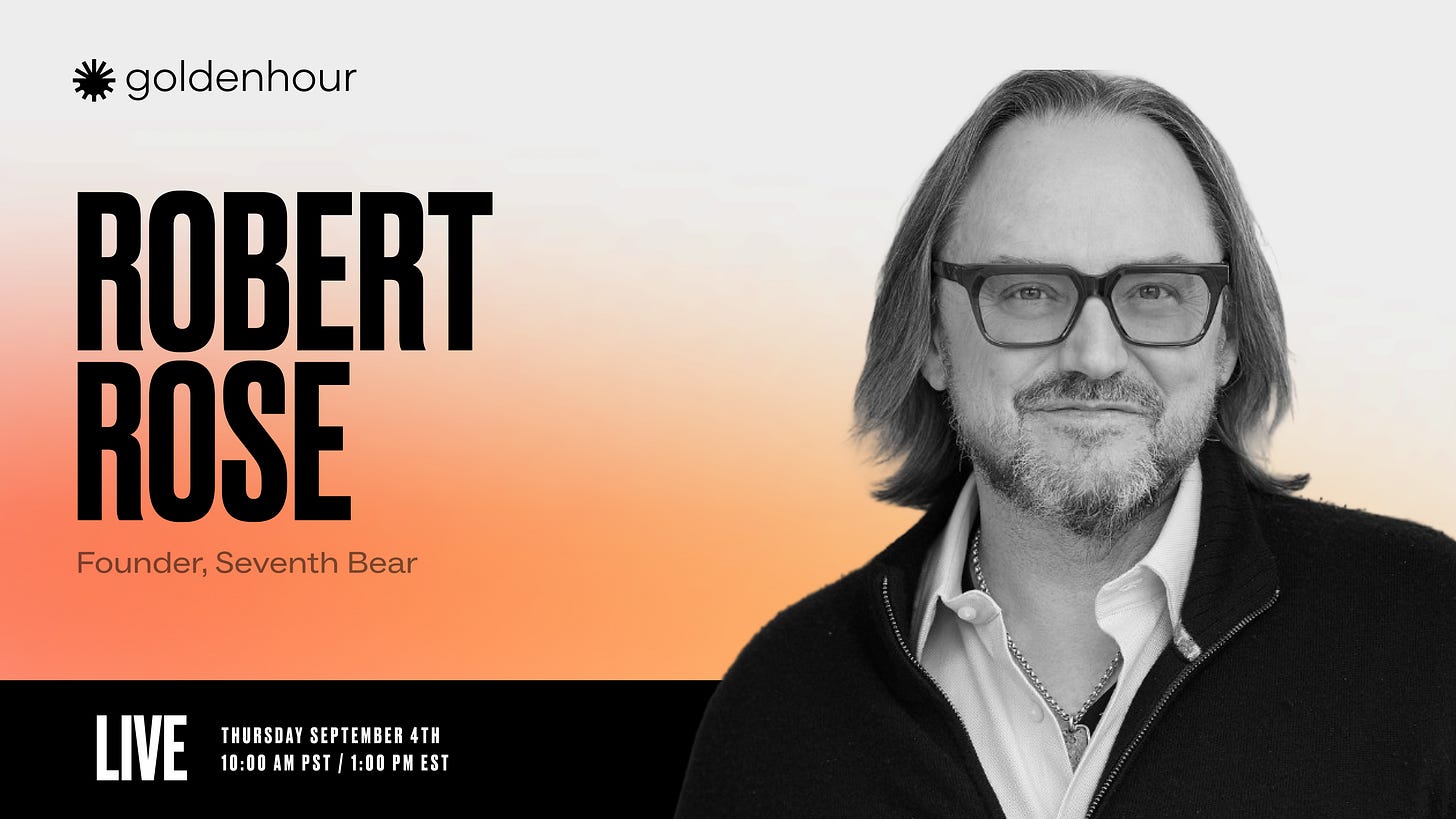How Executives Should Really Show Up on LinkedIn
Hint: Stop Playing the Creator Game
Last week, I shared my perspective on the messy state of executive content on LinkedIn — and why leaders can’t afford to sit on the sidelines, even when posting online can feel more like playing the creator game than showing up with real humanity.
But I didn’t want to just stop at my own observations.
I reached out to Melissa Rosenthal because few people understand the intersection of brand and social better than she does. She’s built brands with content at the core of her playbook at BuzzFeed, Cheddar, and ClickUp, and now as co-founder of Outlever, she’s helping companies become the number-one news source in their industries.
Our conversation was clarifying, and in many ways, affirming. Melissa’s take: executives don’t need to become creators — but they do need to show up.
Here’s what that actually looks like in practice.
1. Show Up as a Human, Not an Avatar
“Executives are the brand today. People don’t just want to hear from companies anymore — they want to hear from the humans leading them.”
Not long ago, executive communication was tightly controlled — scripted talking points, media training, and only a select few “approved” voices. The brand spoke through polished press releases and official handles.
That gatekeeping is gone. Now, people expect to hear from the actual leaders of a company — unfiltered, present, and human.
Company accounts can broadcast updates, but they can’t build trust on their own. Trust happens when the people behind the logo show up with perspective, conviction, and authenticity.
2. Stop Trying to Beat the Algorithm
“Executives shouldn’t be obsessing over the algorithm. The content should be about building credibility — not playing for reach.”
Melissa was direct: executives don’t win by posting every day, baiting engagement, or hacking their way into the feed. That’s the creator playbook. And when executives chase those metrics, they dilute their voice and erode trust.
She made the point that reach is the wrong yardstick: “If 200 people see your post and they’re the right 200 people, that’s far more valuable than 200,000 impressions from the wrong audience.”
The algorithm is a moving target anyway. Instead of trying to hack distribution, executives should focus on the one thing the algorithm can’t fake: credibility.
As marketers, we’re conditioned to chase performance — CTRs, impressions, conversion rates. But executive content operates on a different plane. The posts that matter aren’t the ones with the biggest reach; they’re the ones that establish authority, sharpen conviction, and humanize the leader.
Watch my full discussion with Melissa here, or keep reading below for more on how executives should show up on LinkedIn.
3. Lead with Conviction, Not Content Strategy
“You’re not posting to become a creator. You’re posting because your customers, your employees, your community need to hear from you. It’s become a responsibility of leadership.”
You’re not there to run a content program or mimic influencers. You’re there to lead in public. When executives share their vision, it signals confidence to the market, alignment to employees, and credibility to customers.
This is where many leaders stumble.
They treat LinkedIn like a marketing channel, delegating it to comms teams or ignoring it altogether. But Melissa’s point is that executive presence isn’t optional — it’s leadership.
For me, this is one of the biggest benefits of showing up online. Every post creates a feedback loop. The comments, debates, and even critiques sharpen my perspective. It’s the public dialogue that forges conviction.
4. Be Authentic, But Stay Intentional
“Authenticity matters. But you have to know the difference between showing humanity and oversharing. One builds trust, the other can erode it.”
Melissa cautioned against “toxic vulnerability” — the trend of oversharing under the banner of authenticity. Leaders need to be human, but they also need to project stability and judgment.
This nuance is critical. Being human doesn’t mean treating LinkedIn like a diary. It means being transparent enough to earn trust, while thoughtful enough to reinforce credibility.
Executives should ask: Does this story reveal something meaningful about me as a leader, or am I venting for catharsis? The former builds trust; the latter undermines it.
5. Use AI as a Partner, Not an Autopilot
“AI can help scale content, but if it strips out the voice of the executive, it completely defeats the purpose.”
AI can make executives more efficient, but it also tempts them to outsource the very thing that makes them valuable — their authentic voice. The result is the flood of formulaic “AI slop” that fills feeds today: content that looks polished but says nothing.
Honestly, the risk here is existential. If executive content starts sounding like everyone else’s, you’ve erased the humanity that sets leaders apart. And once trust is lost, no algorithm tweak or engagement hack can win it back.
Personally, I’ve found AI most useful as a creative sparring partner — for brainstorming angles, stress-testing narratives, or tightening language. But the conviction, the perspective, the story? That has to come from me.
The principle is simple: brand humanity can’t be automated. AI can augment the work, but it should never replace the voice.
What This Means for CMOs
For CMOs, Melissa’s perspective sharpens the playbook in two ways: how you support your executives and how you show up yourself.
Supporting Your CEO/Founder
Prep like a keynote. Don’t let executive content be ad hoc. Treat LinkedIn presence the same way you’d prep a conference keynote or media interview — clear narrative, strong delivery, authentic voice.
Shift the metrics. Help your leaders stop chasing impressions. Redefine success around trust, conviction, and the influence they have with the right audience.
Balance rented with owned. Use LinkedIn for reach, but design a path into newsletters, events, or community where their voice can build durability.
Showing Up Yourself
Lead by example. Your CEO isn’t the only one customers and employees look to. When the CMO shows up online, it humanizes marketing and reinforces brand humanity across the org.
Model authenticity with discipline. Share your perspective in ways that are human but purposeful. Vulnerability builds trust when it’s tied to lessons, not just catharsis.
Use AI as a sparring partner. Experiment with AI to push your creativity and efficiency, but protect your own voice. As a marketing leader, you’ll be judged not just by what you say, but how authentically you say it.
In other words: don’t just coach this playbook — run it yourself. While I believe it’s critical for your CEO to show up online, your own presence as CMO signals conviction, models the culture of the brand, and builds trust in the market.
And as Melissa reminded me, there’s a personal upside too.
Showing up consistently isn’t just good for your company. It’s good for your career too.
If you enjoyed this conversation, you won’t want to miss next week. We’ll go beyond LinkedIn and explore how content marketing is evolving in the Intelligence Age with the one and only Robert Rose.
Robert is a trusted marketing advisor, best-selling author, and co-founder of the team that built the Content Marketing Institute into the leading voice of the industry. Today, through his firm Seventh Bear, he’s guided more than 500 brands — from ambitious startups to global enterprises — helping them build marketing that actually matters.
Join us live on LinkedIn and bring your questions: Thursday, September 4th at 10:00 AM EST / 1:00 PM PST.




